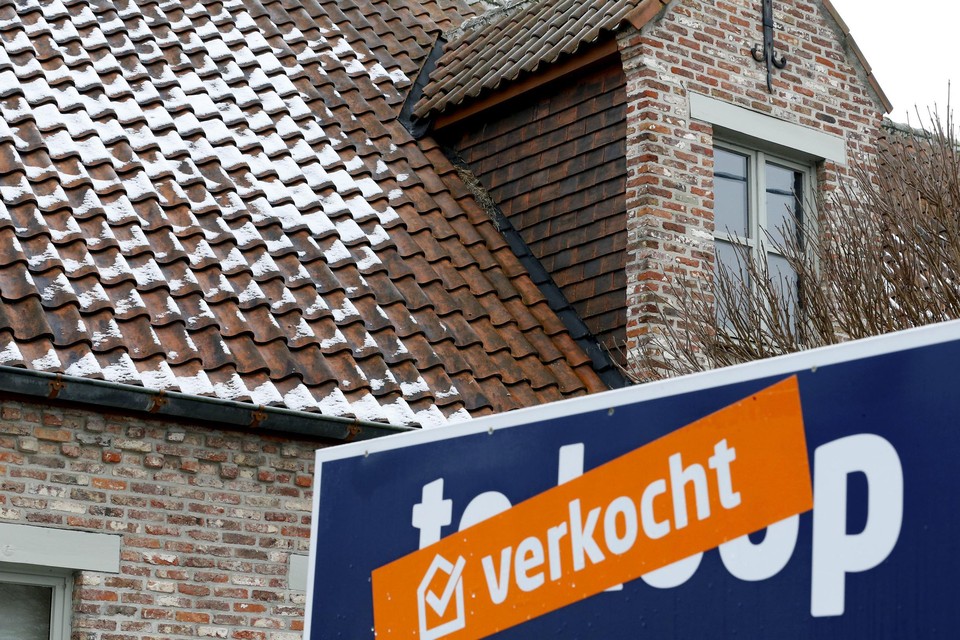High interest rates temporarily paused young people's growing presence in the real estate market. However, experts are seeing renewed optimism for this cohort of buyers in 2025.
The post-Covid years of 2021 and 2022 saw a notable rise in young people aged 18 to 30 buying property as the increased cost of living resulted in the housing market cooling and interest rates were historically low. However, the situation took a turn last year, when young buyers were deemed to be under the "highest financial pressure" since 2008.
"There was definitely this perception that it was getting more difficult for young people to buy property," said Kenny Dauphin, Product Expert Mortgage Loans at BNP Paribas Fortis, which finances one in four real estate loans in Belgium. This mainly came about at the end of 2023, and the trend continued in the first half of 2024.
"We noticed that it was more difficult for young people to buy and to start borrowing. Most people in this segment are at the beginning of their careers – their income and savings are more limited," Dauphin told The Brussels Times. "They were the first group to think 'let's wait it out'."
Borrowing more for longer
However, interest rates started to fall in mid-2024, motivating more young people to buy. "They quickly decided to take out a mortgage loan to buy property," said Dauphin. From the beginning to the end of the year, their market share rose from 27% to 30%. Young people under 35 took out 42% of the bank's new mortgage loans.
The 30-year mortgage loan was the most popular (65% who opted for this were younger than 30). "By borrowing for 30 years, less capital is needed at the start, and people can pay back the loan over a longer period, which reduces the budgetary pressure," said Dauphin.
However, this loan is only for energy-efficient homes (a consumption of less than 159 kilowatt-hours) and for people buying their first and only property, which also explains why its main users are younger. Other banks also offer 30-year loans with fewer conditions, including ING and Belfius. In October last year, insurer Vivium started offering a mortgage loan with a 40-year term and a fixed interest rate of 3% aimed at helping this age bracket.

Credit: Belga
Overall, the payment term is longer for young people. "We see a big difference there. If we look at the overall average for our loans last year, the repayment period was 238 months on average. But for young people under the age of 30, the average is 280 months," said Dauphin. By comparison, couples over the age of 55 pay off their loan in 129 months on average.
The loan-to-value ratio is also much higher. Young people borrow up to 82% on average, while the total average is 74%. "Young people borrow more over a longer term [...] because they have fewer resources than older people."
The reduced registration costs in Wallonia and Flanders also pushed up demand among young people.
Optimism for 2025
For the same reasons that make buying more attractive – reduced registration costs and lower interest rates – demand will also now rise, pushing up property prices. "We expect the increase in prices to be around 3% this year, while in 2026 and 2027 we expect prices to rise by 3.6%," Dauphin noted.
Meanwhile, BNP Paribas Fortis predicts interest rates will fluctuate slightly around today's level (between 2.7% and 3%) over the coming year. "So we don't expect huge increases all of a sudden, but certainly no huge decreases, either. Unfortunately, the historically low interest rates of around 1.5% in 2021 are a thing of the past, and will not be returning."
So, how feasible is it for young people hoping to buy in 2025? BNP Paribas Fortis believes that people in their 20s can still buy a house on the current property market. Koen De Leus, Chief Economist at BNP Paribas Fortis, even predicts first-time buyers will be the main driving force behind the real estate market recovery this year.
Related News
- East Flemish town reclaims title for most expensive properties in region
- Property prices: Woluwe-Saint-Pierre and Ixelles are Brussels' costliest communes
"We are obviously still a long way from the rates of three or four years ago, but they are on a slightly downward trend, which is favourable for borrowers," he said. For younger buyers, any reduction in their total repayment has a big impact.
By way of comparison: for a monthly repayment of €1,000 over a term of 20 years, the repayment capacity of a customer who took out a loan in January 2025 is more than €22,000 higher than that of a customer who took out a loan in January 2024.

